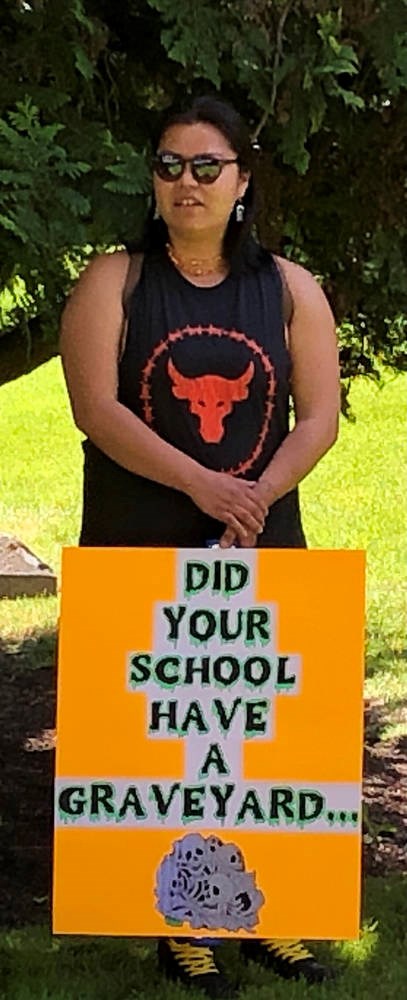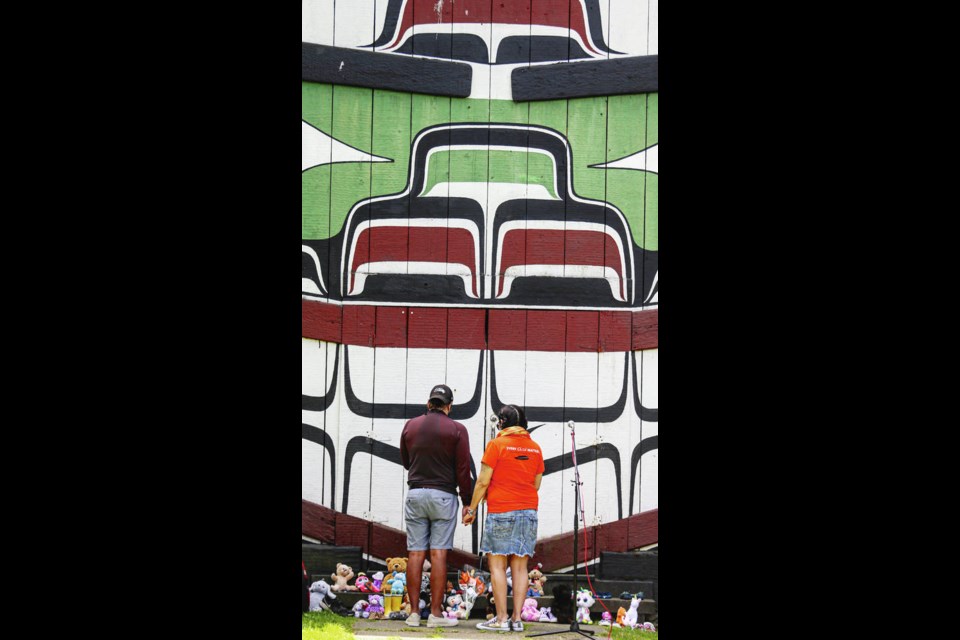For immediate assistance for those who may need it, the National Indian Residential School Crisis Line is available 24 hours a day at 1-866-925-4419.
Residential schools that operated for a century on Vancouver Island were incubators for infectious diseases and rife with physical and sexual abuse and cases of suicide.
Indigenous children were severely malnourished — sometimes starved — and used in experiments to gauge tolerance and test vitamins.
And there was daily and severe humiliation by church leaders and teachers who ran the schools — even custodians — with strappings and beatings to set an example in front of others.
Oral histories and documents collected by the Truth and Reconciliation Committee tell the shocking stories of the misery of generations of Indigenous people. And the grim discovery last month of the remains of 215 children on the grounds of a Kamloops residential school has brought sa���ʴ�ý’s shameful legacy into a sharp, unavoidable light.
Officially, 202 Indigenous children died while attending five residential schools on Vancouver Island.
But First Nations survivors and researchers say many more children perished through neglect, the ravages of tuberculosis and meningitis, lethal fires and injuries from beatings and rapes, and those deaths were never recorded.
Some just vanished trying to make it home and were never heard from again. Some drowned. There are no traces of so many who are now likely only brittle bones scattered on the forest floor.
Ry Moran guided the creation of a national archive that includes thousands of stories from residential school survivors and is now an associate librarian in charge of reconciliation at the University of Victoria — the first position of its kind at a Canadian university.
He says residential schools were the venue for the widespread, systematic genocide of First Nations people.
“sa���ʴ�ý is going through a painful awakening of having the falsities removed and the history of genocide revealed,” said Moran. “This has to happen. The maintenance of the status quo is simply unacceptable.”

The National Centre for Truth and Reconciliation has the names of 2,800 children who died in residential schools, but Moran says there were at least another 1,600 who died, but remain unnamed.
The commission said 150,000 Indigenous children spent at least some time in a residential school from the late 1800s until the late 1980s.
Moran said infectious diseases took a heavy toll on vulnerable children.
“Diseases were made much more transmissible because of how the schools operated,” he said. “They were unsanitary; there wasn’t any hot water. There was insufficient food. There was little ventilation and it was overcrowded.
“They were horrific places.”
Tuberculosis was rampant and lethal in the schools and remains a problem in Indigenous populations. Moran said the Inuit are particularly hard hit, with TB rates of infection up to 500 times greater than for the rest of the Canadian population.
A 1922 report by Dr. Peter Bryce, medical officer for the Department of Indian Affairs from 1904 to 1921, contained in the Truth and Reconciliation archives called TB in residential schools “a national crime.”
Bryce said conditions in the schools were prime for TB outbreaks and epidemics and were “deliberately created.” Nothing much was done about the report and the schools continued to have outbreaks of TB over the years, claiming many lives and long-term health problems.
Moran said Indigenous children were also subject to nutritional experiments. “They were a perfect control group,” he said. “They were so malnourished, even starving, that any sort of vitamin therapy could be assessed.”
Records also indicate that children arriving at the schools at average or above-average height and weight were leaving below average with growth impaired.
Mental health aside, Moran said those physical health problems were passed through generations. “So much of it is manufactured and tied back to residential schools. It’s not an accident. It’s horrifyingly intentional.”
Researchers have thousand of hours of oral histories and millions of pages of records from governments and churches, which Moran says are “sometimes difficult” to understand in context. Most are handwritten, some in French.
There are stories of tragic accidents, fires and drownings.
Moran said some children succumbed to injuries from sexual violence and physical abuse, often for just uttering a word in their own language.
There are also reports of babies being born and dying in schools. Some, he said, were the product of rapes.
“We know the abuse was ever-present,” said Moran. “We’ve heard horrific stories. Frequently, children were beaten or abused in front of other kids to instill fear.”
Bernadine Mawson, a Coast Salish elder whose two brothers attended Kuper Island Residential School, said non-Indigenous people must understand the effects of the schools. “People didn’t believe us. It’s too bad they have to find bodies. We have gone through this all our lives, and people wonder why we have problems.”
Moran said the Kamloops discovery opened the world’s eyes to a dark period in Canadian history. Some of the schools were operating into the 1990s.
The first full generation of Indigenous young people — those in their 20s and early 30s — who weren’t sent to residential schools represent hope for the future, Moran said. Armed with bitter truths, they will aim to preserve their culture, political rights and languages and rebuild from “this generational trauma and genocide.”
Bill Warthe, a member of the Lakota First Nation who lives in Victoria, said he passed three schools on his way to a vigil at the Royal British Columbia Museum for the Kamloops children last week, and “I saw seas of orange.” Orange shirts symbolize awareness of the impact of residential schools.
“The tide has turned” with the new generation, said Warthe. “After 200 years of prejudice, it’s going to take a long long time to fix. But it’s coming. You can see it changing in the young people.”
Residential-school survivors are pressing ahead with a fundraising campaign to acquire ground-penetrating radar equipment so all five residential-school sites on the Island can be searched for unmarked graves.
The launched earlier this week with a goal of raising $25,000 is expected to exceed $100,000 by the weekend.
Organizer Steve Sxwithul’twx, who attended Kuper Island school, said they can’t wait for federal and provincial funding to find their lost children.
Sxwithul’twx said the plan would be to start scanning the grounds at the former Kuper Island Residential School, where there were 107 documented deaths of children, and also start scans at other Island-based properties — the former St. Michael’s Indian Residential School in Alert Bay, Christie School near Tofino, Alberni Residential School in Port Alberni and Ahousaht Residential School.
Moran said the pressure is now on Prime Minister Justin Trudeau and Premier John Horgan to establish monuments for those who died and survived the schools.
“There has to be a place to see the names forever,” he said. “There has to be a place for ceremony, a place to gather, reflect, remember.”
For more information on sa���ʴ�ý’s residential schools, go to and



